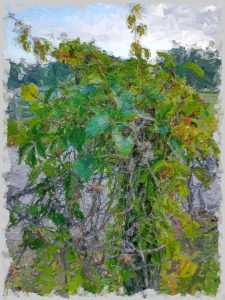The world of filmmaking and video production has continually been revolutionized with the evolution of motion graphics. Motion graphics are essentially the use of graphics or visual elements to bring inanimate objects to life, adding a dimension of movement to static visuals. These graphics are essentially a blend of animation and graphic design and are typically used in films, television shows, advertisements, and video games. The art of motion graphics is a highly sought after craft that requires skill, creativity, and technical expertise. In this article, we will provide an introduction to the craft of motion graphics and explore its various aspects.
Introduction to Motion Graphics
The art of creating motion graphics largely involves the use of various software applications, such as Adobe After Effects, Cinema 4D, and Autodesk Maya. These applications allow the creation of complex animations and visual designs, giving a highly realistic effect to the visuals.
Creating Motion Graphics
The process of creating motion graphics usually involves a structured approach to designing and animating the graphics. The first step typically involves creating a storyboard, which is essentially a visual representation of the final product. Once the storyboard is approved, the graphic designer moves to the actual design process. This involves creating the actual visuals that will be animated later on.
Once the visuals are created, they are exported to the animation application, where the designer can add movement and other visual effects. The animations are typically broken down into keyframes, with the software filling in the frame gaps through an automatic process called tweening. This process brings the visual elements to life, giving the graphic the illusion of movement.
Artistic Aspects of Motion Graphics
The art of motion graphics involves more than just the technical expertise required in creating the visuals. It requires a deep understanding of art and design principles and the ability to use them in the graphics. For instance, a graphic designer needs to have a deep understanding of color palettes, composition, and typography. These elements can enhance the aesthetic quality of the graphics and make it more appealing to the audience.
Visual Effects and Post-Production
The world of motion graphics has also been revolutionized by advancements in graphic technology, such as 3D rendering and simulation. These technologies have taken the craft of motion graphics to another level, enabling a wide range of visual effects possibilities. In addition, the integration of post-production techniques, such as color grading, sound design, and editing, enhances the overall quality of the motion graphics, giving them a polished and professional look.
Conclusion
In summary, the art of motion graphics is an intricate and complex craft that requires a deep understanding of several technical and artistic principles. The use of motion graphics in various areas of film and video production has undoubtedly transformed visual media and allowed for greater creativity and innovation in storytelling. As technology continues to advance, motion graphics will undoubtedly continue to evolve and amaze audiences worldwide.
FAQs
1. What is the difference between motion graphics and animation?
While both forms of visual media involve movement, animation typically involves the creation of characters and scenarios that are brought to life through movement. Motion graphics, on the other hand, involves the use of graphical elements, such as text, shapes, and still images, that are animated to create a dynamic and visually appealing effect.
2. What are some examples of where motion graphics are used?
Motion graphics are widely used in films, television shows, advertisements, and video games. They can be used to create title sequences, promotional videos, explainer videos, and interface design, amongst others.
3. Can I create motion graphics without any design or technical background?
While having design and technical expertise is beneficial in creating motion graphics, it is not a prerequisite. There are several tutorials and online courses that can teach you the basics of motion graphics and how to get started.
4. What are some of the popular software applications used in creating motion graphics?
Adobe After Effects, Cinema 4D, and Autodesk Maya are some of the popular software applications used in creating motion graphics.
5. Are there any notable motion graphics studios that I can look up to?
Yes, there are several notable motion graphics studios, such as Imaginary Forces, Buck, and Giant Ant, amongst others. These studios have produced several award-winning motion graphics projects that are impressive and innovative.






